An Optimization Method for Mix Proportion of Wet-Mix Shotcrete: Combining Artificial Neural Network with Particle Swarm Optimization
Abstract
:1. Introduction
2. Application Background
3. Methodology and Materials
3.1. Optimization Procedure
3.2. Dataset Preparation
3.3. The Establishment of the ANN Model
3.4. Definition of the Objective Functions
3.5. The Optimization of Mix Proportion of Wet-Mix Shotcrete
4. Results
4.1. ANN Architecture Determination
4.2. The Evaluation of the Performance of the Optimal ANN Model
4.3. Results of Mix Proportion Optimization by PSO
5. Conclusions
Author Contributions
Funding
Institutional Review Board Statement
Informed Consent Statement
Data Availability Statement
Conflicts of Interest
References
- Sun, Z.; Chen, L.; Yu, X. Study on optimization of shotcrete loading technology and the diffusion law of intermittent dust generation. J. Clean. Prod. 2021, 312, 127765. [Google Scholar] [CrossRef]
- Steindl, F.R.; Galan, I.; Baldermann, A. Sulfate durability and leaching behaviour of dry- and wet-mix shotcrete mixes. Cem. Concr. Res. 2020, 137, 106180. [Google Scholar] [CrossRef]
- Xu, M.F.; Gao, Y.T.; Jin, A.B. Prediction of cemented backfill strength by ultrasonic pulse velocity and BP neural network. Chin. J. Eng. 2016, 38, 1059–1068. [Google Scholar]
- Ge, Z.; Gao, Z.; Sun, R. Mix design of concrete with recycled clay-brick-powder using the orthogonal design method. Constr. Build. Mater. 2012, 31, 289–293. [Google Scholar] [CrossRef]
- Liu, G.M.; Chen, W.M.; Chen, L.J. Investigating and optimizing the mix proportion of pumping wet-mix shotcrete with polypropylene fiber. Constr. Build. Mater. 2017, 150, 14–23. [Google Scholar] [CrossRef]
- Sinan, H.; Bayrak, O. Optimization of early flexural strength of pavement concrete with silica fume and fly ash by the Taguchi method. Civ. Eng. Environ. Syst. 2004, 21, 79–90. [Google Scholar]
- Tang, H.S.; Li, F.; Wang, Y. Particle swarm optimization algorithm for shape optimization of truss structures. J. Harbin Inst. Technol. 2009, 12, 94–99. [Google Scholar]
- Zhao, R.; Zhang, H.G.; Song, S.S. Global optimization of the diesel engine–organic Rankine cycle (ORC) combined system based on particle swarm optimizer (PSO). Energy Convers. Manag. 2018, 174, 248–259. [Google Scholar] [CrossRef]
- Zhang, J.F.; Huang, Y.M.; Wang, Y.H. Multi-objective optimization of concrete mixture proportions using machine learning and metaheuristic algorithms. Constr. Build. Mater. 2020, 253, 119208. [Google Scholar] [CrossRef]
- Liu, Y.N. Application of Multivariate Nonlinear Mathematical Analysis in Prediction of Concrete Strength. Fly Ash Compr. Util. 2019, 2, 25–27. [Google Scholar]
- Ehsan, M.; Danial, J.A.; Mohsen, H. Prediction of uniaxial compressive strength of rock samples using hybrid particle swarm optimization-based artificial neural net-works. Measurement 2015, 60, 50–63. [Google Scholar]
- Deng, L.; Feng, B.; Zhang, Y. An optimization method for multi-objective and multi-factor designing of a ceramic slurry: Combining orthogonal experimental design with artificial neural networks. Ceram. Int. 2018, 44, 15918–15923. [Google Scholar] [CrossRef]
- Standard, C. Standard for Test Method of Mechanical Properties on Ordinary Concrete; China Architecture & Building Press: Beijing, China, 2002. [Google Scholar]
- Wang, Y.; Cao, Y.S.; Cui, L. Effect of external sulfate attack on the mechanical behavior of cemented paste backfill. Constr. Build. Mater. 2020, 263, 120968. [Google Scholar] [CrossRef]
- Qi, C.C.; Tang, X.L.; Dong, X.J. Towards Intelligent Mining for Backfill: A genetic programming-based method for strength forecasting of cemented paste backfill. Miner. Eng. 2019, 133, 69–79. [Google Scholar] [CrossRef]
- Shen, J.R.; Xu, Q.J. Prediction of interlayer shear strength parameters for RCC dams using artificial neural network and fuzzy logic system. J. Tsinghua Univ. (Sci. Technol.) 2019, 159, 345–353. [Google Scholar]
- Zhang, Q.L.; Liu, W.J.; Wang, X.M. Optimal prediction model of backfill paste rheological parameters. J. Cent. South Univ. (Sci. Technol.) 2018, 49, 124–130. [Google Scholar]
- Zhou, K.P.; Wang, X.M.; Gao, F. Stope structural parameters optimization based on strength reduction and ANN-GA model. J. Cent. South Univ. (Sci. Technol.) 2013, 44, 2848–2854. [Google Scholar]
- Qi, C.C.; Andy, F.; Chen, Q.S. Neural network and particle swarm optimization for predicting the unconfined compressive strength of cemented paste backfill. Constr. Build. Mater. 2018, 159, 473–478. [Google Scholar] [CrossRef]
- Shi, F.; Wang, X.C.; Yu, L. MATLAB Neural Network Analysis of 30 Cases; Beijing University of Aeronautics and Astronautics Press: Beijing, China, 2009; pp. 13–19. [Google Scholar]
- Behnam, J.; Mohamad, R.; Farnaz, J. Using PSO-GA algorithm for training artificial neural network to forecast solar space heating system parameters. Appl. Therm. Eng. 2019, 147, 647–660. [Google Scholar]
- Benvidi, A.; Abbasi, S.; Gharaghani, S. Spectrophotometric determination of synthetic colorants using PSO-GA-ANN. Food Chem. 2017, 220, 377–384. [Google Scholar] [CrossRef]
- Xu, J.; Zhao, X.; Yu, Y. Parametric sensitivity analysis and modelling of mechanical properties of normal- and high-strength recycled aggregate concrete using grey theory, multiple nonlinear regression and artificial neural networks. Constr. Build. Mater. 2019, 211, 479–491. [Google Scholar] [CrossRef]
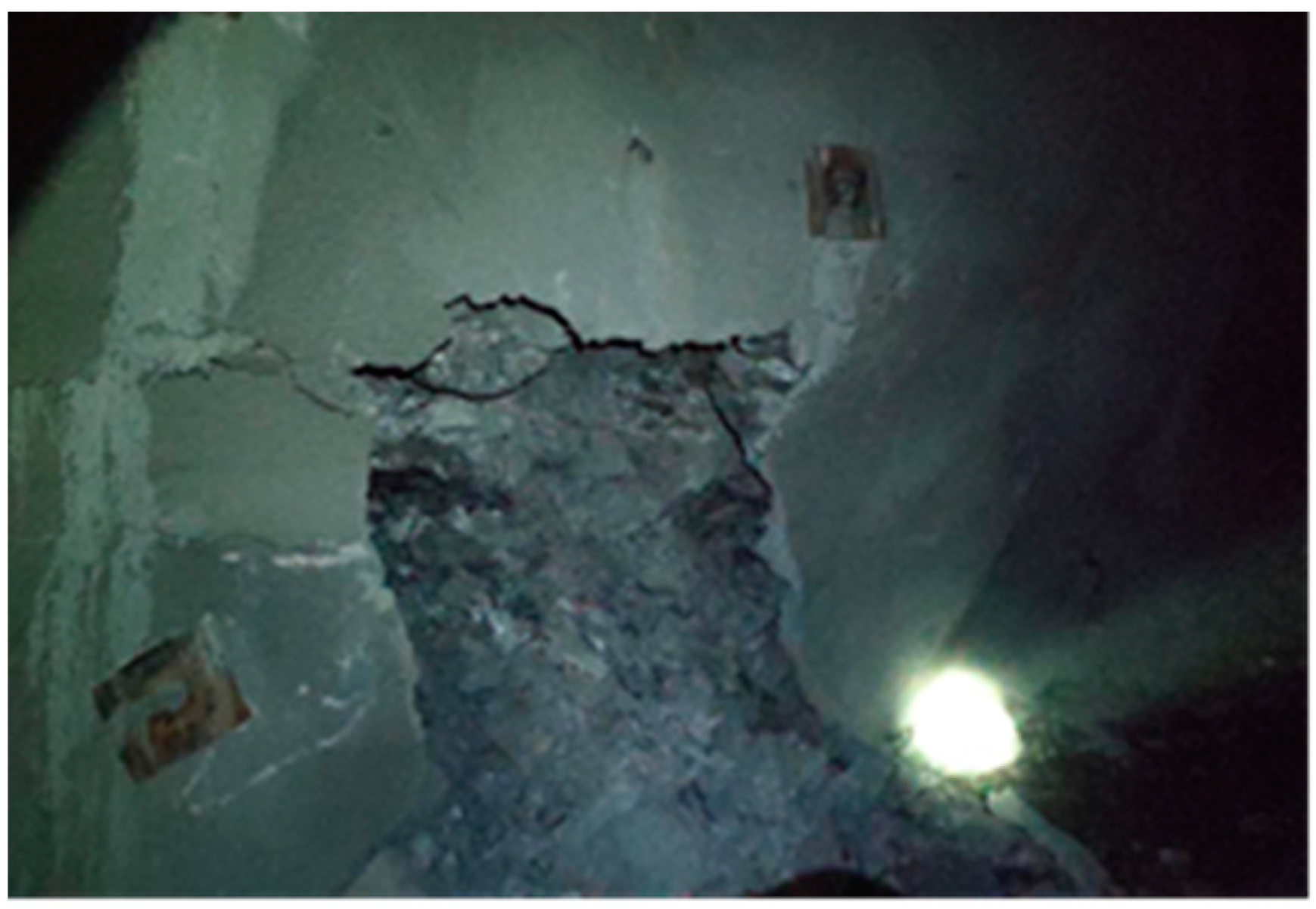

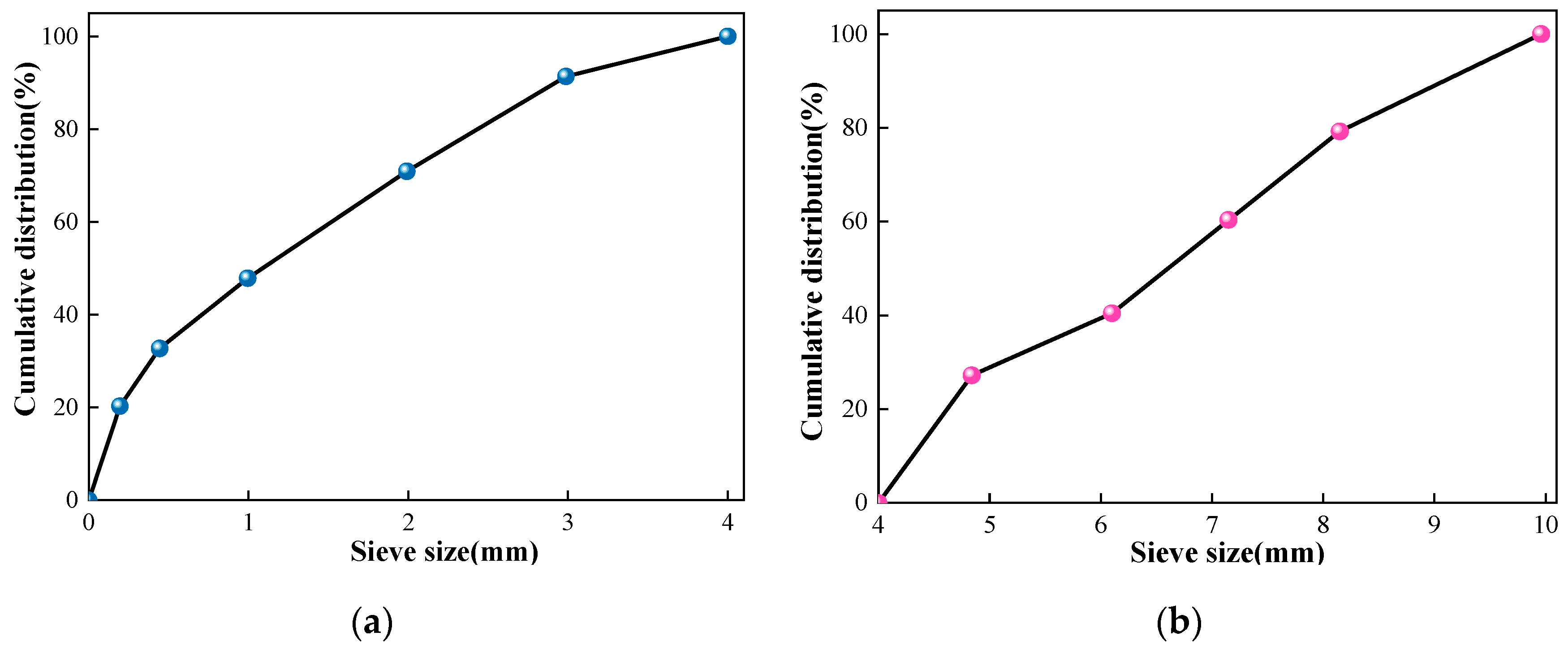

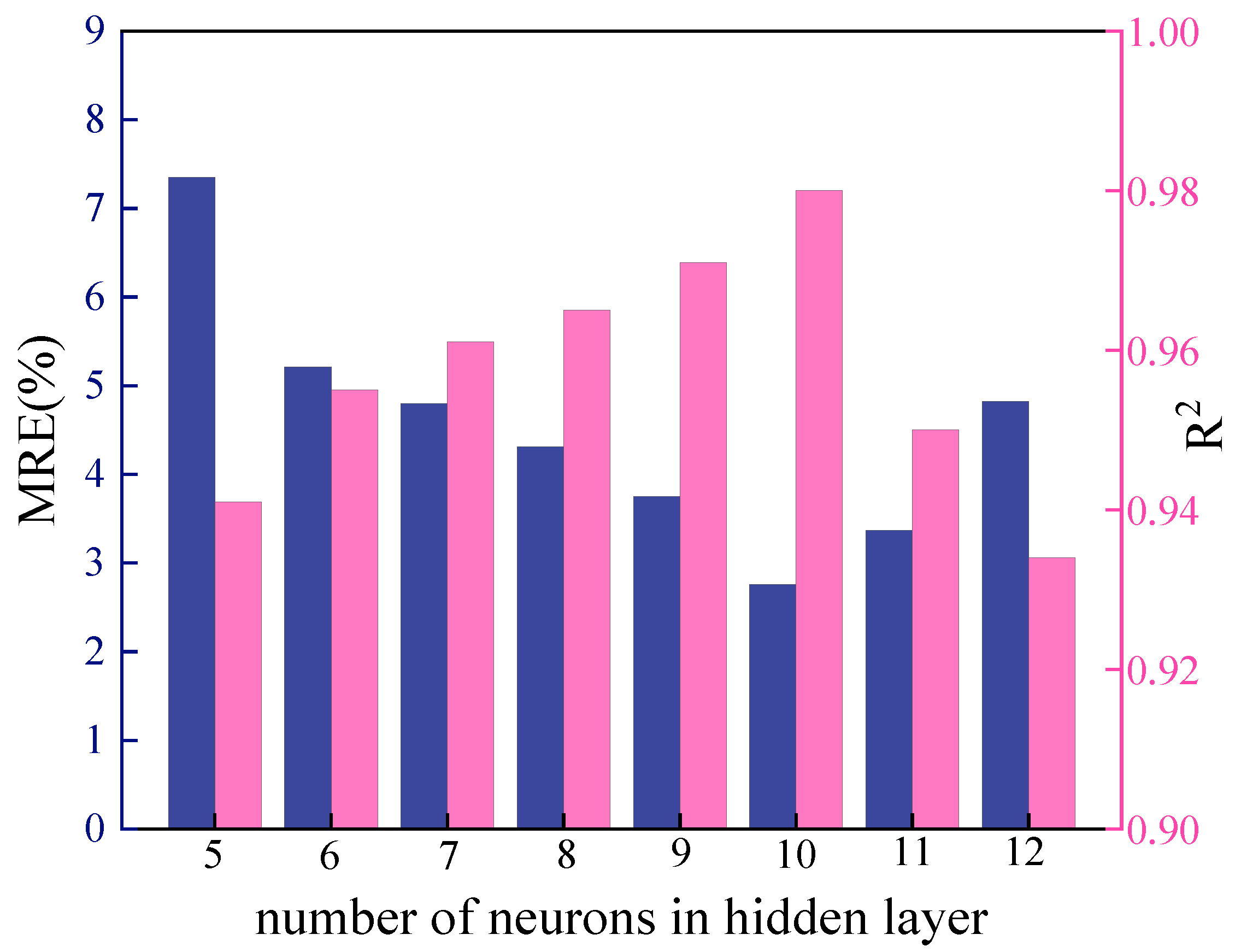
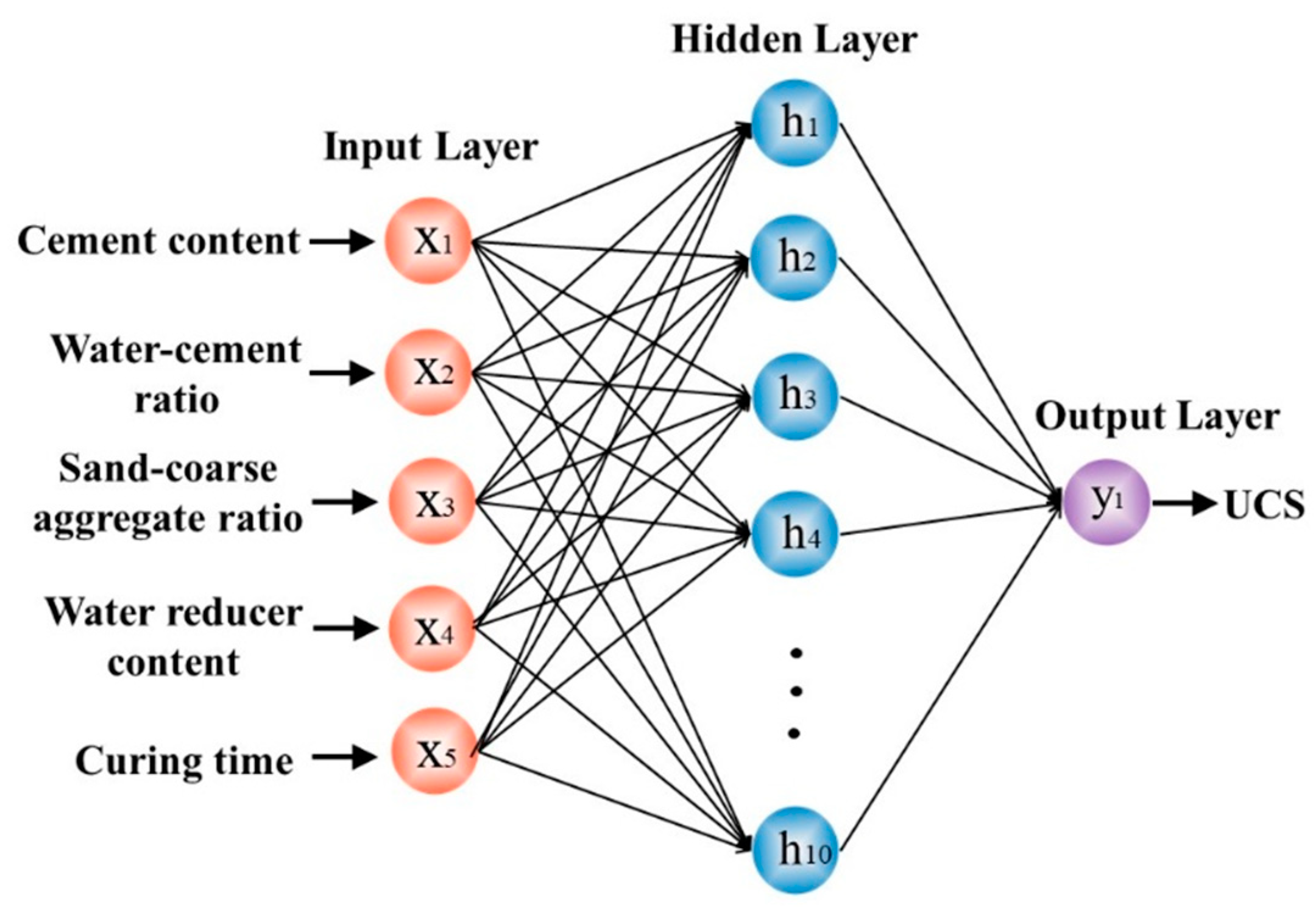
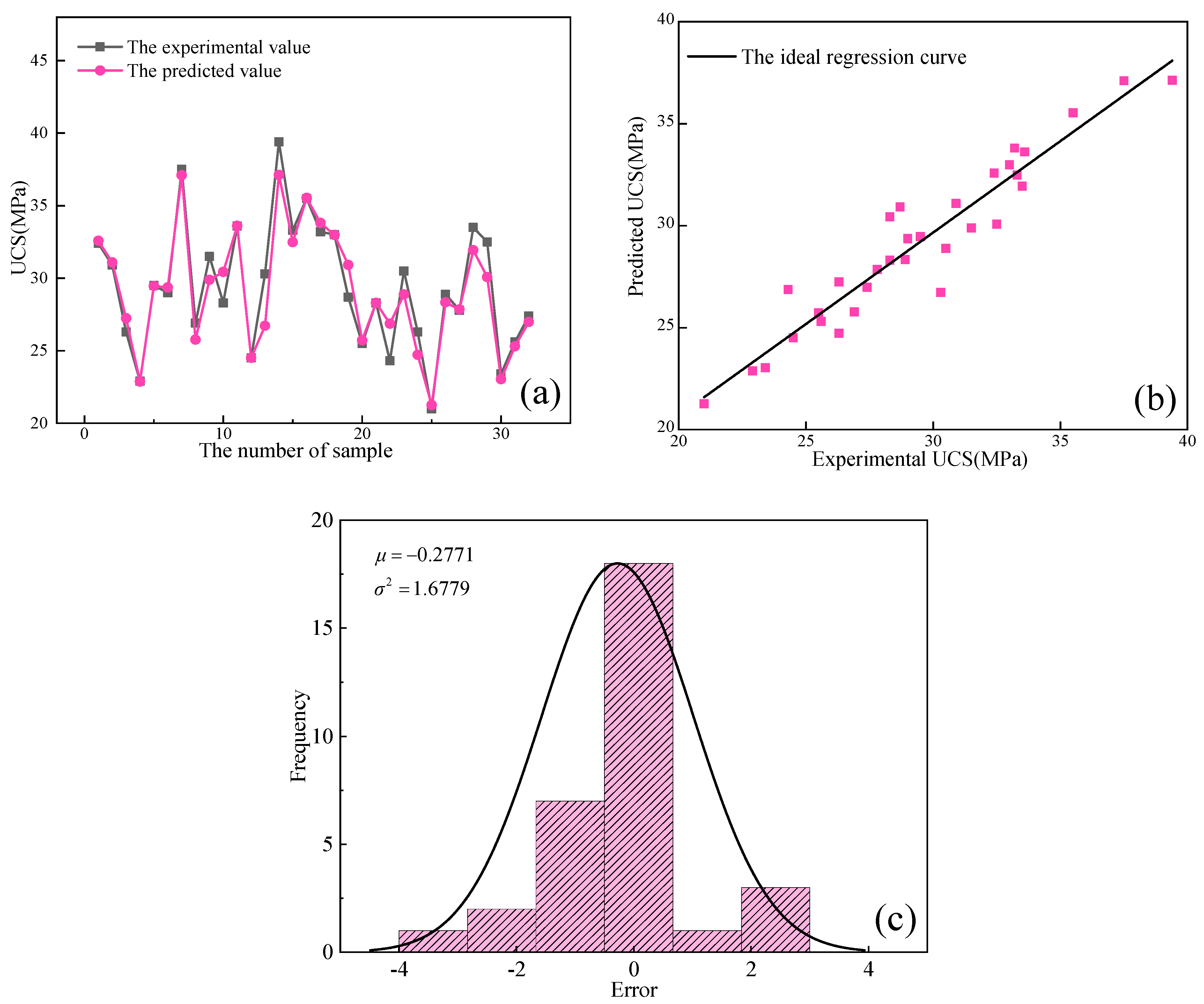
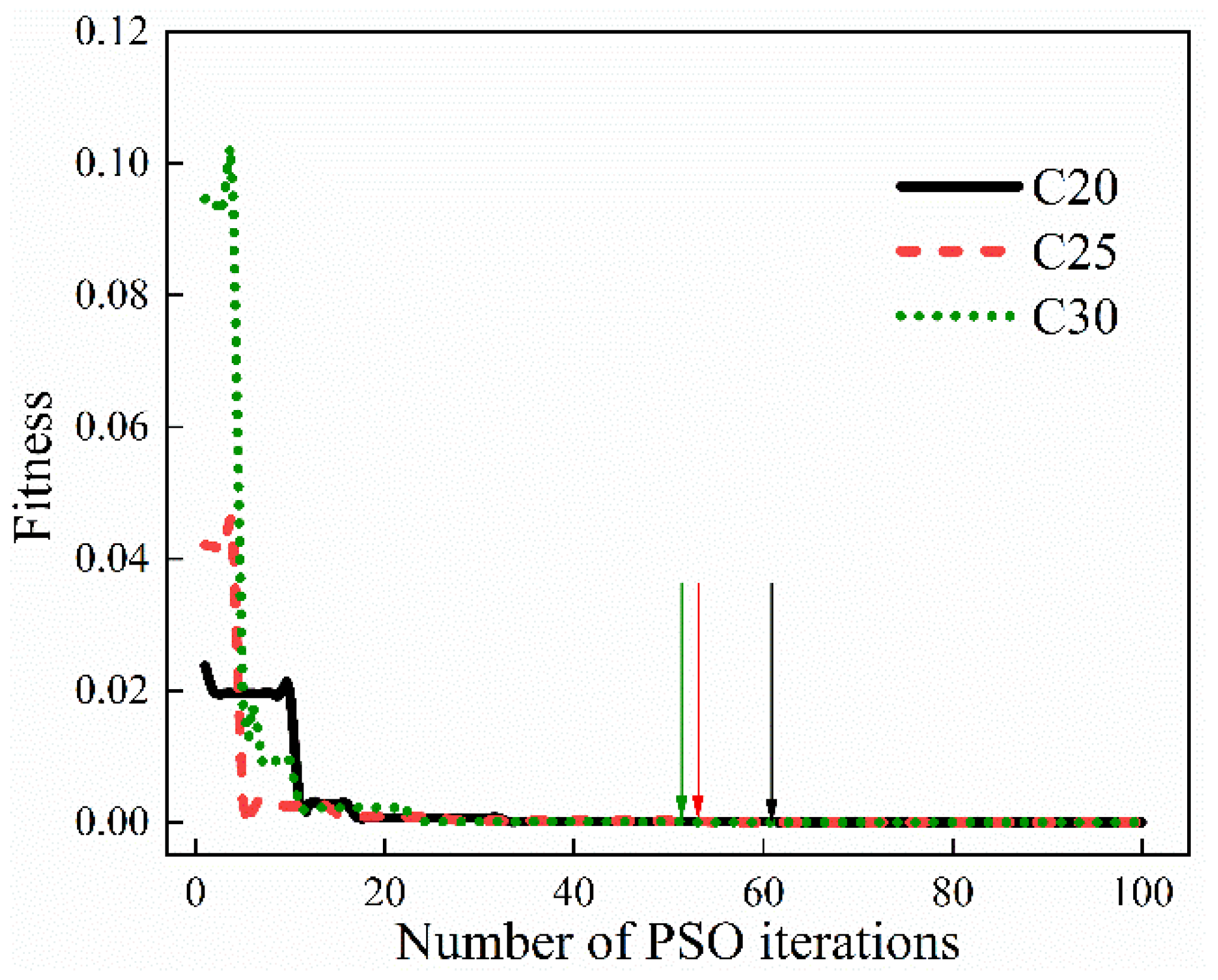
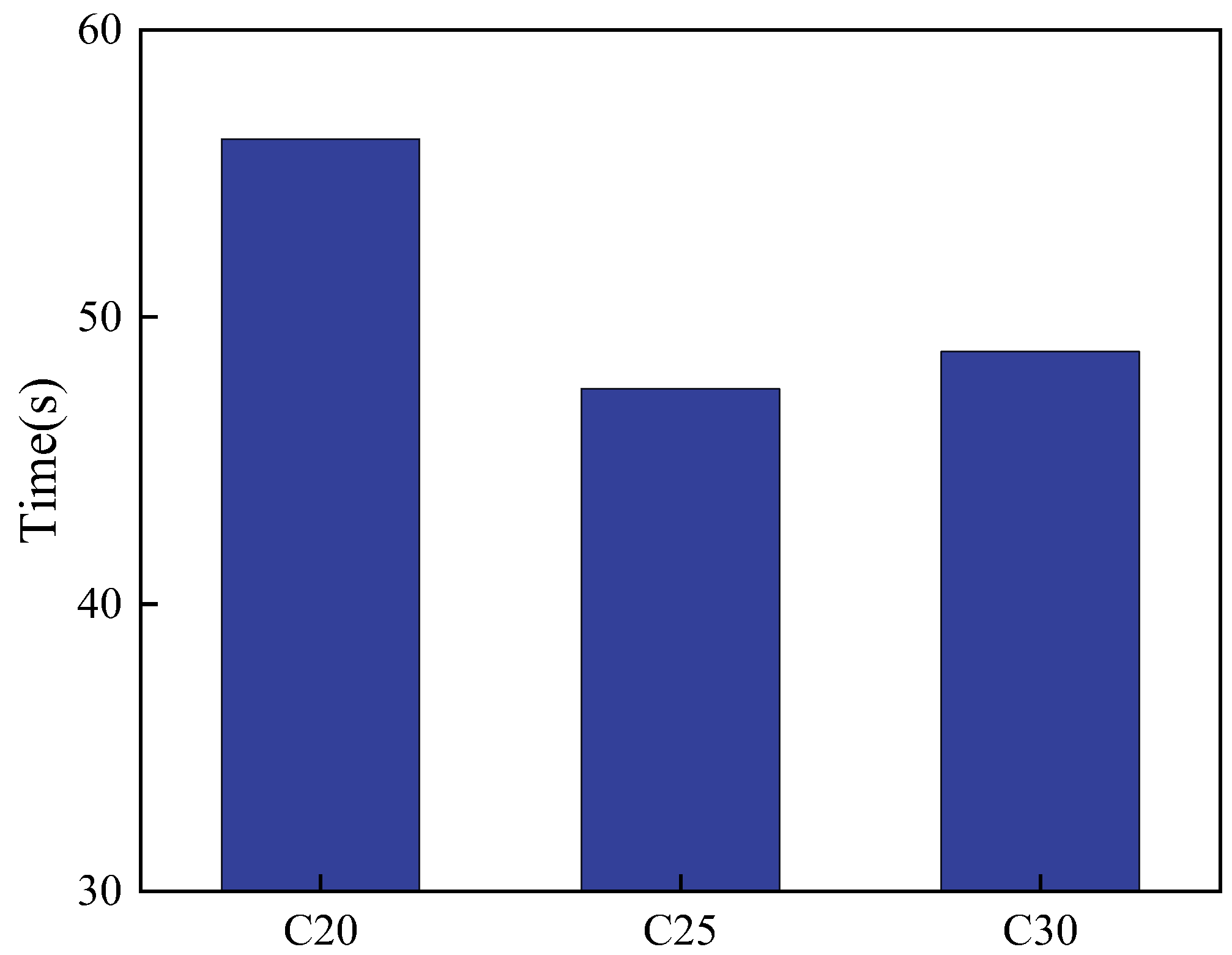

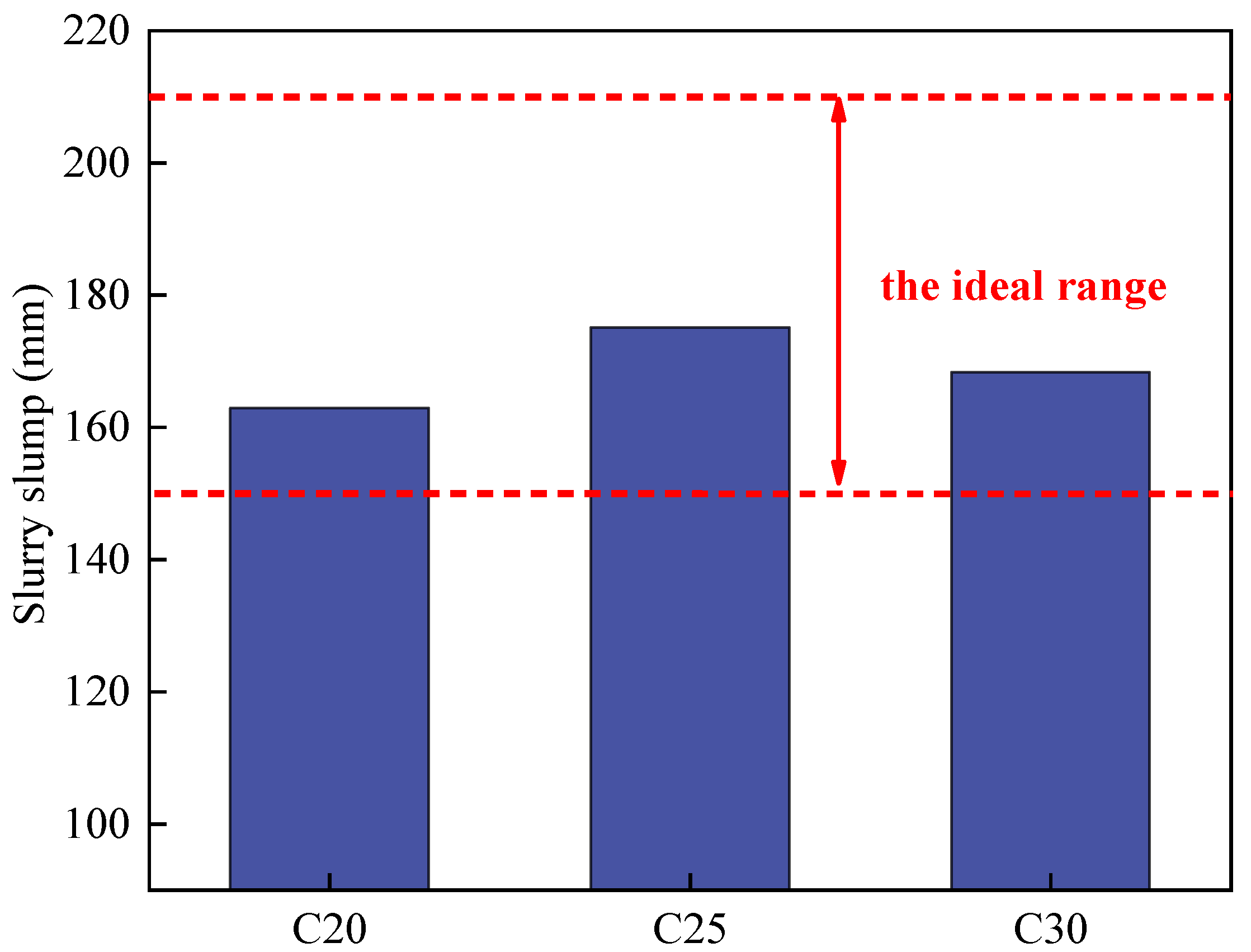
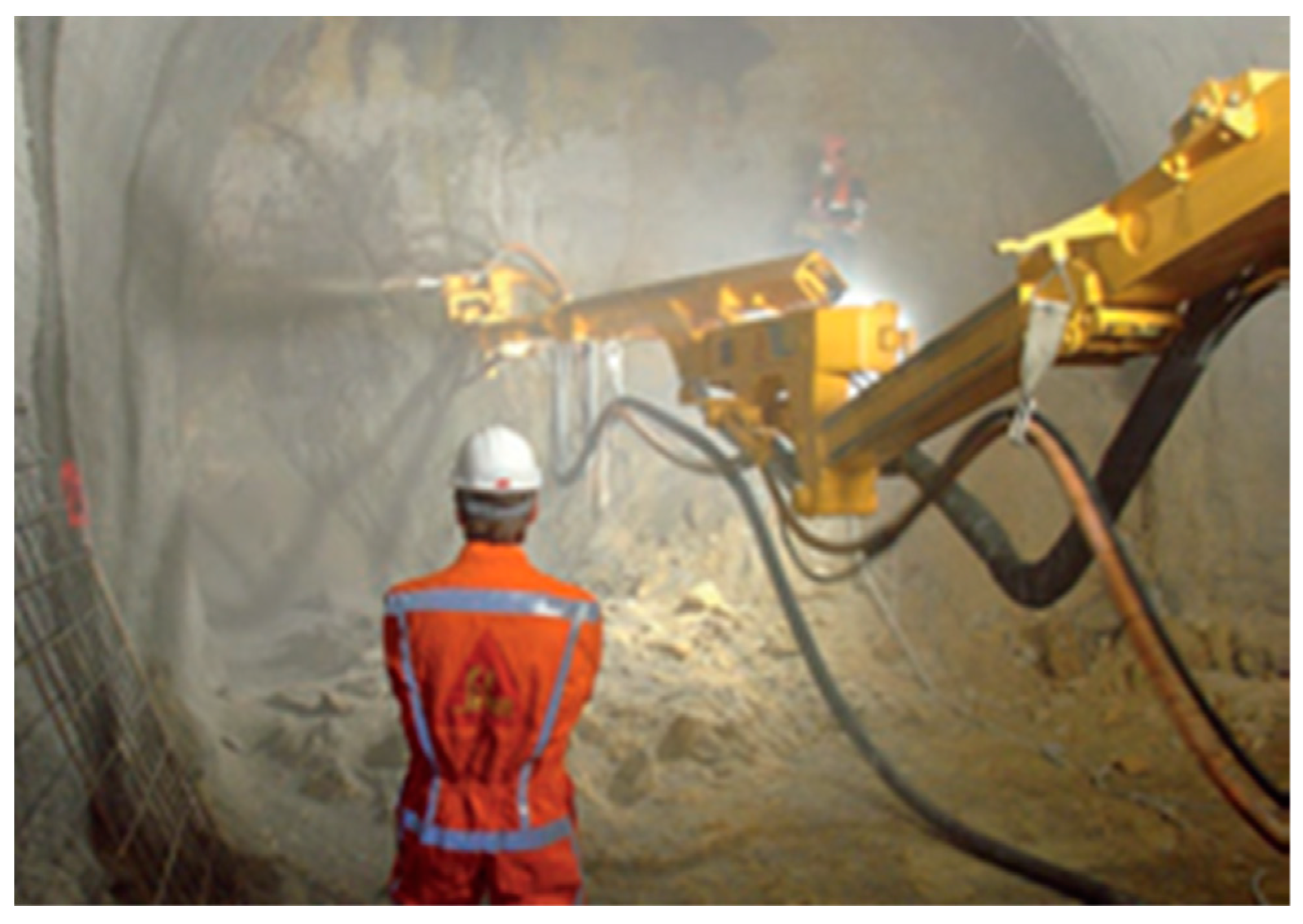
| No. | Cement Content (kg·m−3) | Water–Cement Ratio | Water Reducer Content (%) | Sand–Coarse Aggregate Ratio | UCS (MPa) | |
|---|---|---|---|---|---|---|
| 7 d | 28 d | |||||
| 1 | 420 | 0.42 | 0.65 | 6:4 | 24.3 | 28.3 |
| 2 | 420 | 0.45 | 0.80 | 7:3 | 26.3 | 28.9 |
| 3 | 420 | 0.48 | 0.95 | 8:2 | 22.9 | 25.5 |
| 4 | 420 | 0.51 | 1.10 | 9:1 | 21.0 | 23.4 |
| 5 | 440 | 0.42 | 0.80 | 9:1 | 30.3 | 33.3 |
| 6 | 440 | 0.45 | 0.95 | 6:4 | 26.3 | 30.9 |
| 7 | 440 | 0.48 | 1.10 | 7:3 | 26.9 | 30.5 |
| 8 | 440 | 0.51 | 0.65 | 8:2 | 24.5 | 27.8 |
| 9 | 460 | 0.42 | 0.95 | 8:2 | 32.5 | 35.5 |
| 10 | 460 | 0.45 | 1.10 | 9:1 | 25.6 | 28.7 |
| 11 | 460 | 0.48 | 0.65 | 6:4 | 29.0 | 33.0 |
| 12 | 460 | 0.51 | 0.80 | 7:3 | 27.4 | 31.5 |
| 13 | 480 | 0.42 | 1.10 | 7:3 | 33.5 | 39.4 |
| 14 | 480 | 0.45 | 0.65 | 8:2 | 33.6 | 37.5 |
| 15 | 480 | 0.48 | 0.80 | 9:1 | 28.3 | 33.2 |
| 16 | 480 | 0.51 | 0.95 | 6:4 | 29.5 | 32.4 |
| c1 | c2 | Initial Inertia Weight | Ending Inertia Weight | Particle Velocity | Particle Position | Particle Size | Maximum Iteration | Maximum Iteration Error |
|---|---|---|---|---|---|---|---|---|
| 1.8 | 1.8 | 0.9 | 0.4 | [−1, 1] | [−0.5, 0.5] | 50 | 100 | 10−4 |
| Types of Wet-Mix Shotcrete | Optimal Mix Proportions | The Rounded Optimal Mixing Proportions | ||||||
|---|---|---|---|---|---|---|---|---|
| Cement Content (kg·m−3) | Water– Cement Ratio | Sand–Coarse Aggregate Ratio | Water Reducer Content (%) | Cement Content (kg·m−3) | Water– Cement Ratio | Sand–Coarse Aggregate Ratio | Water Reducer Content (%) | |
| C20 | 316.228 | 0.700 | 7.338 | 0.600 | 316 | 0.70 | 7.3 | 0.6 |
| C25 | 374.234 | 0.420 | 7.463 | 0.600 | 374 | 0.42 | 7.5 | 0.6 |
| C30 | 418.539 | 0.420 | 5.552 | 0.600 | 419 | 0.42 | 5.6 | 0.6 |
Publisher’s Note: MDPI stays neutral with regard to jurisdictional claims in published maps and institutional affiliations. |
© 2022 by the authors. Licensee MDPI, Basel, Switzerland. This article is an open access article distributed under the terms and conditions of the Creative Commons Attribution (CC BY) license (https://creativecommons.org/licenses/by/4.0/).
Share and Cite
Han, B.; Ji, K.; Singh, B.P.M.; Qiu, J.; Zhang, P. An Optimization Method for Mix Proportion of Wet-Mix Shotcrete: Combining Artificial Neural Network with Particle Swarm Optimization. Appl. Sci. 2022, 12, 1698. https://doi.org/10.3390/app12031698
Han B, Ji K, Singh BPM, Qiu J, Zhang P. An Optimization Method for Mix Proportion of Wet-Mix Shotcrete: Combining Artificial Neural Network with Particle Swarm Optimization. Applied Sciences. 2022; 12(3):1698. https://doi.org/10.3390/app12031698
Chicago/Turabian StyleHan, Bin, Kun Ji, Basnet Prabhat Man Singh, Jianhui Qiu, and Peng Zhang. 2022. "An Optimization Method for Mix Proportion of Wet-Mix Shotcrete: Combining Artificial Neural Network with Particle Swarm Optimization" Applied Sciences 12, no. 3: 1698. https://doi.org/10.3390/app12031698
APA StyleHan, B., Ji, K., Singh, B. P. M., Qiu, J., & Zhang, P. (2022). An Optimization Method for Mix Proportion of Wet-Mix Shotcrete: Combining Artificial Neural Network with Particle Swarm Optimization. Applied Sciences, 12(3), 1698. https://doi.org/10.3390/app12031698





